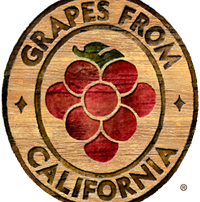Congressman Valadao Introduces Bill to Expand Access to Fresh Produce for Those in Need
Today, Congressman David G. Valadao (CA-22) joined Representative Rosa DeLauro (CT-03) and Senator Sherrod Brown (D-OH) to introduce H.R. 5589, the Fresh Produce Procurement Reform Act. This bipartisan, bicameral bill establishes a new mechanism for the U.S. Department of Agriculture (USDA) to purchase a wide variety of U.S.-grown fresh fruits and vegetables for distribution to those in need.
“We need to ensure our food insecure residents in the Central Valley have access to the fresh, nutritious fruits and vegetables we grow right in our own backyard,” said Congressman Valadao. “This bill not only helps our neighbors in need, but it also helps our domestic agriculture sector by ensuring the produce they grow is being put to good use. I’m proud to join my colleagues to introduce this bipartisan bill that will strengthen our agriculture economy and make fresh produce more widely available to those in need.”
“Far too many families across the United States do not have readily available access to high-quality fresh fruits and vegetables,” said Congresswoman DeLauro. “The USDA’s Commodity Procurement program buys more than $3 billion in domestically produced foods annually and helps drive important reforms across our food system. That is why I am introducing the Fresh Produce Procurement Reform Act with Senator Sherrod Brown and Congressman David Valadao. This will allow our diverse local and regional supply chains the opportunity to distribute U.S.-grown fresh produce to those in need.”
“Improving access to local fruits and vegetables is a win-win for Ohio farmers and residents,” said Senator Brown. “Not only does this bill make it easier for Ohio residents to access local produce, but it will also help create shorter American supply chains, ensuring Ohio small family farmers and businesses keep more of their money in their community.”
Background:
On average, USDA directly purchases more than $2 billion annually of domestic commodities to redistribute to feeding sites around the country. Today, only five fresh produce commodities are available within the Emergency Food Assistance Program (TEFAP) catalog, accounting for just under $6.5 million of purchases. While USDA added a fresh produce box in 2021, it has had limited uptake due to constraints to the current program that limit the variety of fresh produce that can be included. The Fresh Produce Procurement Reform Act seeks to address the shortcomings of the current program to make a wider variety of produce available to organizations serving food insecure populations.
The Fresh Produce Procurement Reform Act would:
- Provide USDA with an additional tool to partner with existing growers and fresh produce distributors to procure a greater amount of fresh fruits and vegetables
- Distribute U.S.-grown fresh fruits and vegetables to local food banks, schools, youth-serving organizations, tribal governments, and other nonprofit community members serving nutrition insecure populations.
- Strengthen access to a wide variety of U.S.-grown fresh fruits and vegetables to recipients in need by including at least seven types of U.S.-grown fresh fruits in vegetables to vulnerable communities living in poverty.
Provide opportunities for a wider variety of high-quality produce sourced, packed, and distributed from growers and distributors of all sizes, including veteran, women-owned, and socially disadvantaged members of the agriculture community.
















